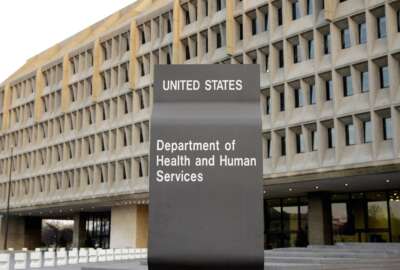Face of Furloughs: Feds swamped by Sandy, double dose of furloughs
A New York family is getting help from the Federal Employee Education and Assistance fund as they dig out from Hurricane Sandy and endure a double dose of...
wfedstaff | April 17, 2015 5:21 pm
A growing list of problems are confronting federal employees — budget cuts, furloughs and the possibility of sequestration all over again in fiscal 2014, to name a few. But, imagine dealing with all of that and then having your house destroyed by Hurricane Sandy.
That’s what happened to Roberto Arroyo, an IRS agent, in October 2012. He is one of the federal employees who has received assistance from the Federal Employee Education and Assistance fund, to help deal with his loss.
“It took me about a month-and-a-half to get back to work, because Hurricane Sandy pretty much affected all of New York and New Jersey,” Arroyo told the Federal Drive with Tom Temin and Emily Kopp, as part of our ongoing series, Surviving Furloughs. “We couldn’t find any suitable living arrangement. We had to go out to Wilkes-Barre, Pa., to stay in a hotel for over month.”
Arroyo did not get back to the Long Beach, N.Y., area until the middle of December and ended up having to hunt for a rental property for his family to live in. He works in the IRS’ Brooklyn, N.Y., office.
Thanks to FEEA, Arroyo received a loan to help out with rental expenses, as he is still waiting for repairs to be completed on his home so that he can move back in.
“It’s getting close to almost 10 months since the hurricane hit,” he said. “For now, we’ve just been bouncing around from one rental apartment to another on Long Island, just to keep us as close as possible. They were very helpful enough trying to get the funding. I was doing OK for a while, until the furloughs kicked in.”
Double dose of furloughs hit family displaced by Hurricane Sandy
The arrival of unpaid furlough days had a double impact on Arroyo’s family, since his wife also works as an IT specialist in the IRS’ Bethpage, N.Y., office.
“So, as I was furloughed, she was furloughed,” Arroyo said. “So both our paychecks were affected.” 
FEEA gave the Arroyos a $500 grant to help on the rent and a $600 loan to help them get by.
“The insurance gave me a settlement, which seems right now enough to get repairs done,” Arroyo said. “I’m working with the contractor. He’s been trying to keep us pretty much under budget. We’ve got all the electrical, plumbing, new insulation and sheetrock. Now I’m ready to do a 50 percent inspection by my mortgage company in order to release more funds.”
Arroyo and his family expected to move back in by September. However, the Federal Emergency Management Agency just notified homeowners in their neighborhood that they would need to elevate their homes due to their proximity to the ocean.
“I have a one-floor house that was pretty-much devastated,” Arroyo said. “So now I’m dealing with that situation in securing grant funding for that, just to raise my home.”
Similar repairs and improvements are taking place all over Long Island. Arroyo has already registered with the New York Sandy help website for grants to help him pay for the renovation.
“It’s going to cost me close to $80,000 just to do it,” he said.
Expenses rack up as family puts their lives back together
So far, the Arroyos have had three furlough days. They were lucky enough to avoid the fourth one and the IRS announced it was postponing the fifth scheduled furlough day on Aug. 30.
While some people might be able to squeeze by with three unpaid workdays due to furloughs, not everyone is facing the same hardships as the Arroyos.
“We were displaced from our home and, in addition to my wife, we both work for the federal government,” Arroyo said. “It’s both our paychecks being affected. And on top of that, there are certain things that the insurance doesn’t cover that we have to replace, like the contents of our home. We lost everything, from furniture to appliances. The most we were able to salvage were clothes. So, we had to make do. … All the insurance provides is to just fix the home itself up. Contentswise, that falls on us.”
Right after the hurricane hit, Arroyo was placed on leave without pay because his office was closed for a period of time. Fortunately, he was able to apply for emergency leave to replace some of the lost income.
“I did have to incur [unpaid days] a few days here and there,” he said. “But at least they were able to accomodate me with close to 80 percent of getting my time back.”
Read more stories from our Surviving Furloughs series. Plus find out how you can donate to FEEA or apply for a FEEA loan.
RELATED STORIES:
Face of Furloughs: DoD employee struggles to pay bills
IRS postpones Aug. 30 furlough day
Copyright © 2025 Federal News Network. All rights reserved. This website is not intended for users located within the European Economic Area.
Michael O’Connell is senior digital editor of Federal News Network optimizing content for the best user experience. Follow @moconnellWFED
Follow @moconnellWFED






